Home › Forums › Horse and Musket › Napoleonic › 'The Battle That Never Was': Fishguard 1797 on Jemima Fawr's Blog
- This topic has 24 replies, 8 voices, and was last updated 5 years, 11 months ago by
 Jemima Fawr.
Jemima Fawr.
-
AuthorPosts
-
22/04/2018 at 21:35 #89189
 Jemima FawrParticipant
Jemima FawrParticipantI’ve posted the first in a series of articles on the little-known (and very rarely wargamed!) Battle of Fishguard on my blog:
‘The Battle That Never Was’ – Fishguard 1797: http://www.jemimafawr.co.uk/2018/04/22/the-battle-that-never-was-fishguard-1797/
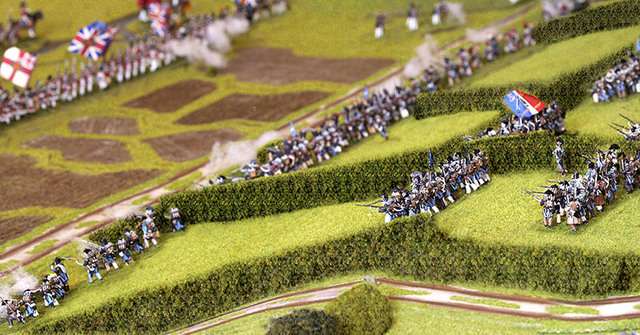


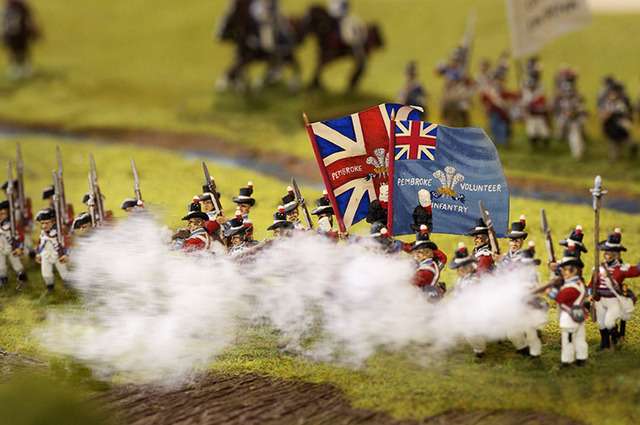
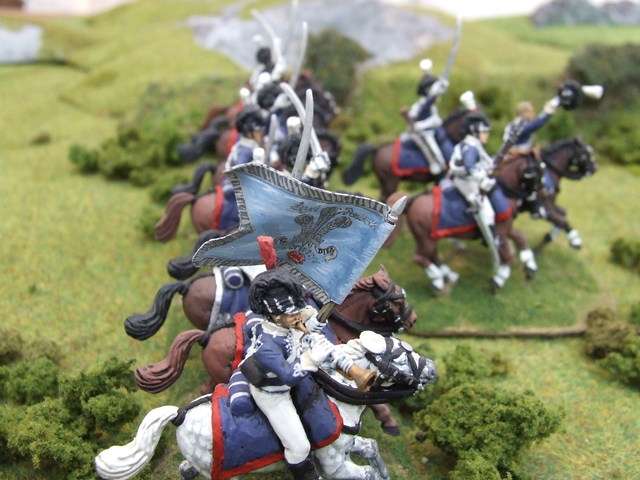
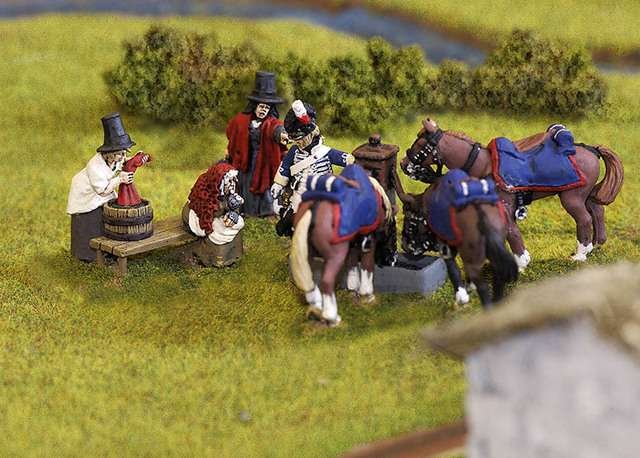
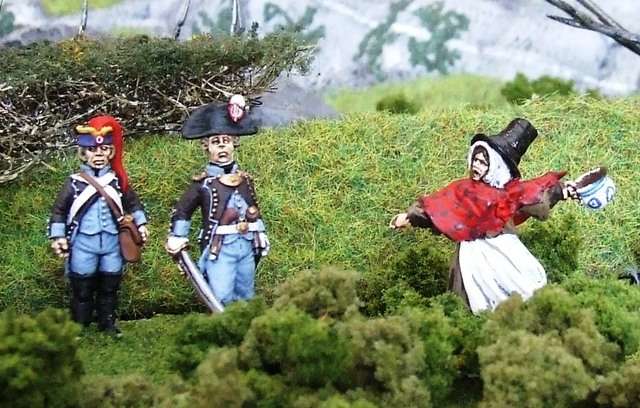
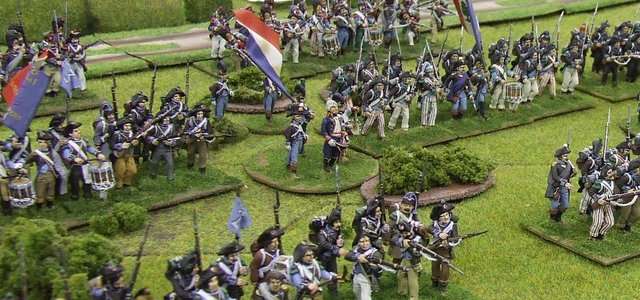
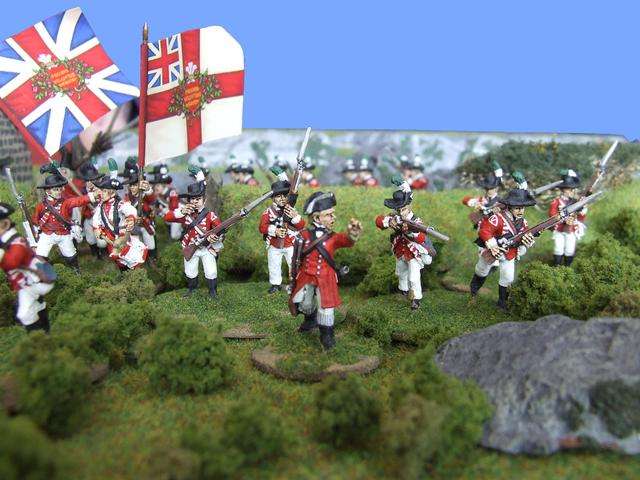
My wargames blog: http://www.jemimafawr.co.uk/
22/04/2018 at 22:43 #89191 BanditParticipant22/04/2018 at 23:30 #89193
BanditParticipant22/04/2018 at 23:30 #89193 Jemima FawrParticipant
Jemima FawrParticipantCheers Bandit! There’s a lot more to come, including scenarios, orbats, uniforms and individual unit/character profiles.
My wargames blog: http://www.jemimafawr.co.uk/
23/04/2018 at 19:21 #89231 vtsaogamesParticipant
vtsaogamesParticipantMarvelous stuff!
It's never too late to have a happy childhood
25/04/2018 at 11:03 #89381 Jemima FawrParticipant
Jemima FawrParticipantThanks! There’s some more Fishguard stuff up now:
French Forces at Fishguard, 1797: http://www.jemimafawr.co.uk/2018/04/23/french-forces-at-fishguard-1797/
British Forces at Fishguard, 1797 (Part 1): http://www.jemimafawr.co.uk/2018/04/24/british-forces-at-fishguard-part-1/
These articles include the orbats and painting and modelling guides, as well as profiles for all the significant commanders, characters and units in the story. British Forces Part 2 will be up later today and that will be followed by a couple of scenarios (each including several ‘what-if’ variants) and for campaign purposes, a breakdown of all the other British units that were known to be marching to the scene.
My wargames blog: http://www.jemimafawr.co.uk/
26/04/2018 at 14:58 #89467 Darkest Star GamesParticipant
Darkest Star GamesParticipantThank you for writing this up. I found it fascinating. Also somewhat difficult to track all of the units, with these yeomanry, and that militia… truly mind boggling the shear variety.
Was it really common for so much looting to accompany such military actions during those times?
"I saw this in a cartoon once, but I'm pretty sure I can do it..."
26/04/2018 at 21:15 #89473 zippyfusenetParticipant
zippyfusenetParticipantFirst rate series of blog posts, excellent photos, great looking game. I was entertained and I learned something. Very creative use of figures to build forces for an out-of-the-way battle. I would not have thought of converting ACW into RN Napoleonic naval infantry. One question: Where in the world did you come up with those figures of Welsh women?
You'll shoot your eye out, kid!
26/04/2018 at 22:26 #89474 Jemima FawrParticipant
Jemima FawrParticipantCheers DSG!
Yes, it’s a truly baffling subject and took quite a lot of research at the time we were planning the game! Essentially the main groupings were:
Militia
County Militia Regiments were raised by each county by conscripting men based on a ballot system. The number of men conscripted was based on the population and relative wealth of each county. Once a man’s name was drawn in the ballot, they would serve in the Militia for five years. This wasn’t too bad in peacetime, as the terms of service were similar to today’s Army Reserve – one drill-session per week and an annual summer training camp. These part-time units were known as the ‘Disembodied Militia’. However, they could also be called out to suppress civil unrest, which was all-too common during times of bad harvests and subsequent hunger. In wartime however, Militia service was A LOT more onerous, as they instantly became full-time soldiers (‘Embodied Militia’). These were frequently deployed to the far end of the country, manning forts, coastal batteries and garrison towns, as well as suppressing civil dissent, which became even more prevalent as war-austerity hit. Thus, wartime service in the Militia was deeply unpopular.
However, magistrates were allowed to exempt conscripts from Militia service where they were the family’s sole bread-winner or where their trade provided a vital and irreplaceable service to the local community. Conscripted men were also permitted to find a replacement and large sums of money would change hands in order to persuade others to serve on their behalf. This of course was open to abuse and stories abound of ‘replacements’ doing a midnight flit, leaving the conscript’s family penniless and with that man still having to serve in the Militia!
Officers were all volunteers and were generally drawn from the ‘merchant’ and ‘land-owning’ classes, as well as local gentry. Service as a Militia officer meant that that man’s name was removed from the Militia Ballot. Consequently, many young gentlemen volunteered to serve in the despised Militia as a commissioned officer in order to avoid the risk of having to serve in the ranks. As the Napoleonic Wars drew on, the links between Militia and regular county regiments became stronger and the Militia was increasingly seen as an acceptable route for an aspiring young officer to gain a regular commission in the local regiment.
Uniforms were based on the regular Line Infantry Regiments and were generally indistinguishable from the regulars, with red coats, coloured facings, buttonhole lace and equipment exactly the same as the regulars. However, it seems that where a county already had a regular county Infantry Regiment, the Militia would either not have lace at all, or would edge the facings in lace instead of having buttonhole lace ‘bars’. In the case of Wales, there were no county regiments, so all Welsh Militia regiments had buttonhole lace. However, some regiments were equipped and trained as Light Infantry, wearing short jackets, black belts and black leather caps with horsehair manes. One of the Yorkshire Militia regiments even had a few companies clothed in green and armed with ‘fuzees’ (rifles), while the Merionethshire Militia was trained as artillery and had privately-purchased short blue jackets to wear while serving the guns.
These oddities seem to have largely disappeared by 1800, though a number of Militia regiments (including the Cardiganshire Militia) were converted to Light Infantry around 1808/1809, being then dressed and equipped the same as the regular red-coated Light Infantry regiments, with drums replaced by hunting-horns. Some (such as the Pembrokeshire Militia and Carmarthenshire Militia) even became ‘Fuzileer Militia’ (affiliated to the 23rd (Royal Welch) Fusiliers), complete with fur caps!
In 1812, five Militia regiments were converted to Rifles, with the Royal Pembrokeshire (Fuzileer) Militia and Royal Cardiganshire (Light Infantry) Militia being two of these. The Royal Pembrokeshire (Rifles) Militia was affiliated to the 95th Rifles and wore the same uniforms, while the Royal Cardiganshire (Rifles) Militia were affiliated to the 60th Rifles and again wore that uniform.
Some Militia regiments additionally had regimental bands and even artillery detachments. These were generally paid for by extremely wealthy Colonels – the Royal Buckinghamshire Militia and Royal Staffordshire Militia were particularly lavishly-equipped and gained the honorific ‘King’s Own’ as a result of their performance on parades and royal reviews. Regimental gunners generally wore the standard red coats, though would be supervised and trained by attached RA personnel or ‘Invalid Gunners’ (also known as ‘Woolwich Invalids’). Invalid Gunners wore the usual red-faced, blue RA uniform, though without yellow lace.
In terms of organisation, Militia Regiments were frequently very small, depending on the population size and wealth of the county. In Wales during the 1790s, the ‘regiments’ were typically 80-250 men strong, typically organised into 1 to 4 companies. For example, the Pembrokeshire Militia had a strength of 160 men, organised into four companies. This had remained unchanged since the Seven Years War. The Supplementary Militia Act of 1796 increased the regiment’s strength to 331 men (number of companies unknown). The Cardiganshire Militia had a strength of 120 men, organised into four companies. The Supplementary Militia Act increased this in late 1796 to 474 men (number of companies unknown). The Carmarthenshire Miltia had 226 men, organised into three companies. During the AWI they had numbered 360 men. Following the passing of the Supplementary Militia Act, the strength of the Carmarthenshire Militia was increased to a whopping 790 men, organised in ten companies. However, it seems that only 263 of these new men actually served full-time with the regiment (from 1798). The rest were trained and put on ‘furlough’. I’ll discuss ‘Supplementary Militia’ below.
While most Militia regiments were initially too small to have designated Grenadier and Light Companies, the best men in each company were designated as such, would be awarded the appropriate uniform distinctions and would stand on the flanks of the line.
When ‘Embodied’, these tiny Militia ‘regiments’ were typically brigaded together into brigades of half a dozen or so regiments, totalling 1,000-1.500 men. A very common posting for these brigades was guarding the south and east coasts of England. They were not permitted to be sent abroad – not even to Ireland or the Channel Islands.
I should also mention that Scotland was not permitted to raise Militia regiments. This was a throwback to the days of the Jacobite Rebellion. Curiously, Ireland, while no slouches in the rebellion department, was permitted to raise Militia…
Supplementary Militia
As mentioned above, county Militia regiments, when ‘Embodied’ for wartime service, frequently found themselves serving at the opposite end of the country, leaving their home counties largely undefended. As a consequence, Pitt the Younger’s government passed the Supplementary Militia Act in 1796, which called for the raising of an additional ‘Disembodied Militia’ for local defence during wartime. This was somewhat prophetic, as Pembrokeshire was practically undefended when the French landed in February 1797. The Cardiganshire and Pembrokeshire Supplementary Militia were only just in the process of being raised and it was only by sheer luck that the Cardiganshire Militia was in the area at the time.
When the Supplementary Militia was initially raised, they roughly doubled or tripled the strength of existing Militia regiments. In most cases they padded each regiment out to a full battalion of ten companies. During the early 1800s these became re-named as ‘Reserve Militia’.
Fencibles
In England, Wales and Ireland, the Fencibles were full-time cavalry regiments, organised and equipped as Light Dragoons. They were known variously as ‘Fencible Light Dragoons’ or ‘Fencible Cavalry’. Scotland also had Fencible Infantry regiments to make up for the lack of Scottish Militia regiments. There were also ‘Sea-Fencibles’ supporting the Royal Navy, but I don’t know much about them.
Fencible regiments were raised for defence of the British Isles during wartime and as such were full-time troops. Unlike the Militia, Volunteers, Yeomanry, etc, they were permitted by act of Parliament to be sent to Ireland or the Channel Islands. The Fencibles were disbanded in 1803.
Just like the Yeomanry, Fencible Cavalry uniforms were typically of Light Dragoon pattern (short jacket and Tarleton helmet), though frequently lacked the ‘hussar braid’ of the regulars. Instead they would just have the rows of buttons, sometimes with a ‘box’ of lace framing the buttons. Officers frequently purchased pelisses for full dress. Jackets were usually red, though many eventually adopted blue jackets (this was allegedly an honour for serving in Ireland).
In terms of organisation, these regiments were frequently very small, with just a few Troops. For example, the New Romney Fencible Cavalry, who marched to Fishguard and took responsibility for the PoWs, only numbered four Troops – probably about 16o men.
Provisional Cavalry
The Provisional Cavalry regiments were a brief experiment, only lasting from 1796-1802 (or thereabouts). They were intended to be a mounted version of the county Militia, though instead of being raised by ballot, were instead raised as a ‘tax’ on the landowners, whereby each gentleman owning land/wealth above a certain threshold was required to provide the county Provisional Cavalry regiment with a man and a horse.
Only a few counties raised such regiments and there were none in Wales. Needless to say, the landowners utterly opposed this additional financial burden and they rarely managed to raise more than a few dozen men for each regiment. The idea was then strangled, with Provisional Cavalry regiments briefly becoming Fencible regiments before they too were disbanded.
Uniforms are essentially unknown, but are believed to have been identical to Fencible/Yeomanry-style Light Dragoon uniforms.
Yeomanry Cavalry
The first county Yeomanry Cavalry regiments were raised in 1793, in concert with Volunteer Infantry regiments. These units were to be part-time volunteer cavalry units for defence of their own county and the neighbouring counties. However, as time went on they eventually took on more of a full-time role, sometimes operating at the far end of the country for months at a time, largely taking on the role of the disbanded Fencibles (though never abroad or in other islands of the UK). Each man was meant to provide his own uniform and horse, which initially limited membership to the land-owning classes or ‘Yeomen’. The government would then provide the weaponry and cavalry equipment. However, wealthy landowners (such as Lord Cawdor) would frequently supply the horses and uniforms, with volunteers coming from their estate-workers and tenant-farmers, as well as the ‘Yeomen’ more typically associated with the Yeomanry.
In addition to local defence, the Yeomanry were frequently called out to suppress civil disorder – either by threat (e.g. parading in the market square on market-day) or by direct action (such as the notorious Peterloo Massacre). Consequently, the Yeomanry were frequently unpopular members of society. However, a member of the Yeomanry who gave six months’ good service would have their name removed from the hated Militia Ballot, so there was rarely a shortage of recruits.
The Yeomanry were disbanded along with the Fencibles and Volunteers with the Peace of Amiens, but (unlike the Fencibles) were re-formed following the resumption of hostilities in 1805.
Volunteers
As with the Yeomanry, the ‘Volunteer Corps’ were raised by act of Parliament from 1793 and were part-time units for defence of their home locality and the surrounding area (iirc, the official limit to service was something like two days’ march from home, though many units marched far further than that in an attempt to meet the French landing at Fishguard). Unlike the Yeomanry, there had actually been Volunteer Corps raised for previous wars such as the Seven Years War and American War of Independence and in some cases (such as the Pembroke Volunteers), these units were simply re-formed with many of the same men. As for the Yeomanry, six months’ good service as a Volunteer would exempt a man from the Militia Ballot.
The vast majority of Volunteer Corps were infantry (often light infantry) units, though some were mixed, having mounted and even artillery sections (usually at the colonel’s own expense). For example, the Fishguard & Newport Volunteers were tasked with manning the three guns of Fishguard Fort (assisted by three Invalid Gunners), while the Towyn Volunteers north of Aberystwyth had a small detachment of ‘Dragoons’ and an artillery detachment with a 2-pounder ‘grasshopper gun’ that the CO bought out of his own pocket for ‘crowd control’… Until it blew up…!
Prior to Fishguard, Volunteer Corps were fairly thin on the ground nationwide, being fairly unpopular due to their typical crowd-control duties and ‘bully-boy’ tactics. The newspapers and cartoonists of the day vilified them for being little more than armed drinking clubs. Wales had only half a dozen or so such corps (most of which actually seem to have been well-led, disciplined and well-trained), but they absolutely exploded in number during the patriotism/panic that followed the French landing at Fishguard.
By 1803 the Volunteers had become a gigantic, expensive monster of extremely limited military value and it was with some relief that they were disbanded with the Peace of Amiens. However, they returned with a vengeance in 1805, becoming even more unruly and useless than before! Finally, the Army and the government had had enough and decided to bring them under the far better-regulated county Militia system.
Uniforms and organisation for these units were unimaginably varied and in many cases, unrecorded. It’s worth having a google for the dozens of prints of London Volunteer Corps held by the Anne S K Brown Collection in order to see the bewildering array of uniform colours and styles. The majority of uniforms were red, but blue, brown and green are also recorded, with cocked hats, slouched hats, round hats, crested round hats, Corsican hats, Tarletons, mirlitons, jockey caps, chain caps, fur caps, shakos and even busbies all being used.
Local Militia
With the second disbandment of the Volunteer Corps in 1808(ish), the more respectable/useful volunteers were invited to join new Local Militia Battalions, which would form the junior battalions of the county Militia regiments. In Wales, the Embodied Militia and the Reserve Militia typically formed the 1st Battalion, while the Volunteers formed the 2nd, 3rd, 4th, 5th, etc (Local Militia) Battalions. These battalions would then be uniformed, equipped, trained and organised to a common standard. This pattern was probably typical nationwide.
This standardisation of training, equipment and discipline produced massive results and the regular Army quickly began using the Local Militia along with the Embodied Militia as a source of experienced recruits – particularly for officers.
Anyway that’s about it! Simple! 🙂
I think I should probably cut and paste that as a new blog article…
My wargames blog: http://www.jemimafawr.co.uk/
26/04/2018 at 22:33 #89475 Jemima FawrParticipant
Jemima FawrParticipantOh yeah, the looting was undoubtedly a consequence of two primary factors:
- French Revolutionary armies were indoctrinated to live off the land in order to supplement the meagre rations provided by the army. This frequently caused resentment in those they were ‘liberating’.
- At Fishguard, the astonishing truth is that the Black Legion had not been provided with ANY rations by the Army and the Navy refused to share theirs, so the troops were starving even before they landed. The discovery of massive stores of salvaged wine, port and sherry in the Welsh farms didn’t help… (a Portuguese wine-ship had been wrecked and looted locally only a few weeks before)
It’s a fascinating ‘what-if’ to consider what might have happened if a. they’d had a meal before landing and b. if a decent regiment had been landed. They utterly outnumbered the forces Cawdor brought to bear and as will be seen, they actually outnumbered virtually all of the military forces immediately available in Wales AND western England! It’s easy to laugh it off as a comic-opera, but it could so easily have been a bloodbath, followed by a history-changing campaign.
My wargames blog: http://www.jemimafawr.co.uk/
26/04/2018 at 22:44 #89477 Jemima FawrParticipant
Jemima FawrParticipantFirst rate series of blog posts, excellent photos, great looking game. I was entertained and I learned something. Very creative use of figures to build forces for an out-of-the-way battle. I would not have thought of converting ACW into RN Napoleonic naval infantry. One question: Where in the world did you come up with those figures of Welsh women?
Cheers Zippy! If you look closely, there are inaccuracies – e.g. three-banded muskets instead of bandless Brown Bess, later-pattern ‘box’ backpacks, short AWI-style gaiters instead of knee-length 1790s gaiters, but it looks great en masse and upsetting the ‘Bricole-Counters’ is no bad thing…
Martin made ‘Jemima & Friends’ mainly from Perry Miniatures ‘ACW Rioters’ (which I think are based on the film ‘Gangs of New York’) and Redoubt Miniatures French & Indian Wars sets, plus ‘Tavern Wenches’, plus a lot of Greenstuff and Redoubt Miniatures mediaeval peasant weapons packs. He’s a very talented lad who has since gone professional as a model-maker and has created master models for the likes of QRF, Pendraken, Lancashire Games and others. He also made an amazing VBCW 1938 unit of Welsh Nationalists for me, being Welshmen dressed in ‘traditional Welsh drag’ and based on the cross-dressing ‘Rebecca Rioters’ of 1839.
My wargames blog: http://www.jemimafawr.co.uk/
26/04/2018 at 22:46 #89478 Jemima FawrParticipant
Jemima FawrParticipantIt’s also worth mentioning that when we did this in 2013, just about the ONLY plastic 28mm figures available at the time were Perry ACW, Perry Napoleonic French Infantry & Hussars and Victrix French Infantry. There are STACKS of better alternatives available now – not least of which are the Perry plastic British Light Dragoons for the Yeomanry.
My wargames blog: http://www.jemimafawr.co.uk/
27/04/2018 at 00:33 #89479 zippyfusenetParticipant
zippyfusenetParticipantMartin made ‘Jemima & Friends’ mainly from Perry Miniatures ‘ACW Rioters’ (which I think are based on the film ‘Gangs of New York’) and Redoubt Miniatures French & Indian Wars sets, plus ‘Tavern Wenches’, plus a lot of Greenstuff and Redoubt Miniatures mediaeval peasant weapons packs.
A lot of Greenstuff, and a whole lotta talent.
You'll shoot your eye out, kid!
27/04/2018 at 00:51 #89480 Jemima FawrParticipant
Jemima FawrParticipantHe’s certainly got that! I couldn’t even cope with assembling the plastic figures…
My wargames blog: http://www.jemimafawr.co.uk/
27/04/2018 at 03:21 #89481 vtsaogamesParticipant
vtsaogamesParticipant“I think I should probably cut and paste that as a new blog article…”
Indeed! Entertaining and educational.
It's never too late to have a happy childhood
27/04/2018 at 04:46 #89486 Jemima FawrParticipant
Jemima FawrParticipantThanks! It’s all from memory, so I’ll tidy up the half-remembered dates and facts before sticking it on the blog.
My wargames blog: http://www.jemimafawr.co.uk/
27/04/2018 at 16:28 #89530 Darkest Star GamesParticipant
Darkest Star GamesParticipantAnyway that’s about it! Simple! I think I should probably cut and paste that as a new blog article…
Thank you for that post, VERY informative! Those of us brought up in America often find UK history (particularly the class structures, their responsibilities and privileges) a bit baffling and maze-like, and you cleared up a heck of a lot for me. And as said above, informative AND entertaining! Much appreciated!
"I saw this in a cartoon once, but I'm pretty sure I can do it..."
27/04/2018 at 20:59 #89538 Jemima FawrParticipant
Jemima FawrParticipantYou’re most welcome! Honestly, I don’t know what’s so complicated. It’s like cricket: You have two sides, one out in the field and one in. Each man that’s in the side that’s in goes out and when he’s out he comes in and the next man goes in until he’s out. When they are all out the side that’s out comes in and the side that’s been in goes out and tries to get those coming in, out. Sometimes you get men still in and not out. When both sides have been in and out including the not outs…that’s the end of the game.
What could be simpler…?
My wargames blog: http://www.jemimafawr.co.uk/
27/04/2018 at 21:04 #89539 Darkest Star GamesParticipant
Darkest Star GamesParticipantWhat could be simpler…?
Creating cold-fusion power? Ha!
"I saw this in a cartoon once, but I'm pretty sure I can do it..."
27/04/2018 at 21:46 #89541 Jemima FawrParticipant
Jemima FawrParticipantNot as complicated as trying to understand blog software, plug-ins, etc… The daughter said “It’s so simple, that you have to be a very special sort of idiot not to understand it…”
Nice to know that I’m very special…

My wargames blog: http://www.jemimafawr.co.uk/
27/04/2018 at 22:53 #89545 Guy FarrishParticipant
Guy FarrishParticipantYour daughter is cut from the same cloth as mine – Welsh girls eh?

Great post – wish I’d read it c20 years ago – would have saved a lot of struggling through numerous volumes, grey hairs and premature baldness!
27/04/2018 at 23:04 #89547 Jemima FawrParticipant
Jemima FawrParticipantI now refer to her as ‘IT Support’…
Me too… I then wouldn’t have had to have tracked down all those books (and go bald)… 🙁
Anyway, I forgot to mention that Part 2 of the British Forces article is up, followed by two Fishguard scenarios (plus variants), which can be played separately or as a mini-campaign. If I can manage to log back into the blog which has binned me out, I’ll stick up what I know about the units that were marching to Fishguard (but who didn’t make it in time), as well as ideas for a larger campaign and the bibliography.
My wargames blog: http://www.jemimafawr.co.uk/
30/04/2018 at 19:28 #89685 duc de limbourgParticipant
duc de limbourgParticipantGreat picures, blog and information.
Thanks very much for sharing
30/04/2018 at 21:02 #89693 Jemima FawrParticipant
Jemima FawrParticipantEh up, my duc (the wife’s from Derbyshire…)!
Thank very much indeed! 🙂
My wargames blog: http://www.jemimafawr.co.uk/
01/05/2018 at 19:08 #89760Brendan Morrissey
ParticipantSome excellent Sharp Practice 2 material there, as well. Good stuff – recall this appearing in one of the British Grenadier scenario books a while back, bach.
01/05/2018 at 23:47 #89774 Jemima FawrParticipant
Jemima FawrParticipantCheers Brendan!
Yes indeed! Of course, Sharp Practice didn’t exist when we wrote the Fishguard articles and I’ve not yet played it, but I believe that it’s perfect for the job.
You might also want to check out the acknowledgements at the end of the last article… The usual used bills in a plain envelope, ok?
My wargames blog: http://www.jemimafawr.co.uk/
-
AuthorPosts
- You must be logged in to reply to this topic.



